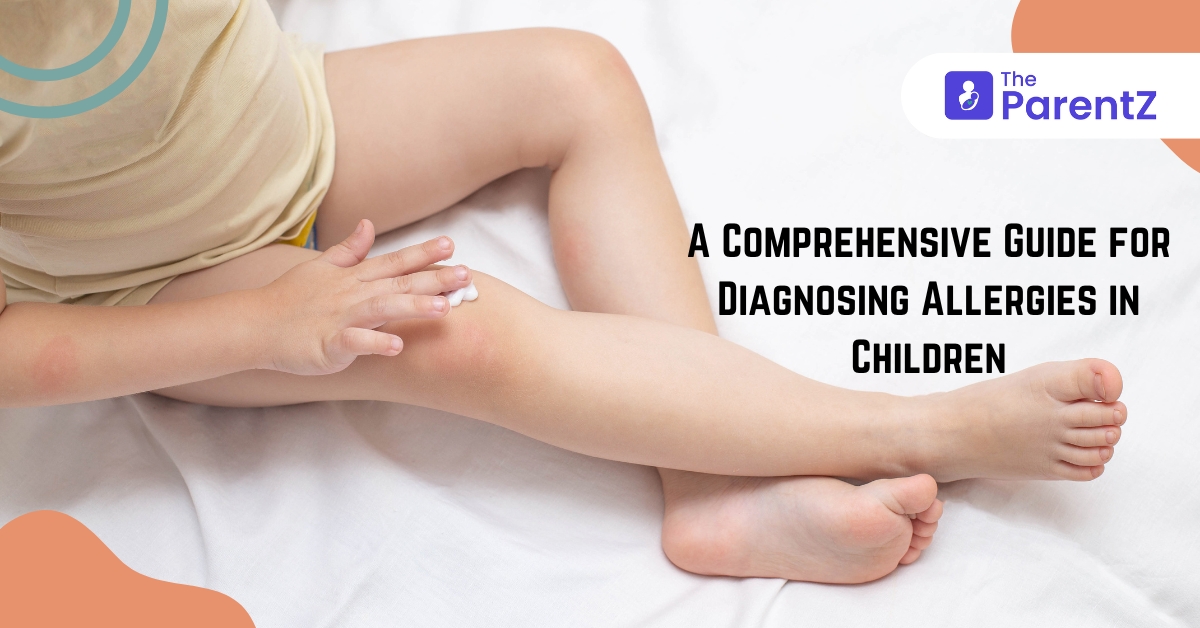Diagnosing allergies in children requires a systematic approach involving symptom recognition, a detailed medical history, appropriate allergy tests, and the maintenance of a medical diary. Accurate diagnosis and successful management of allergies in children depend on collaboration with healthcare professionals and specialists. Children with allergies can dramatically enhance their quality of life and avoid potential consequences with early diagnosis and the right interventions.
It is critical for children’s health and quality of life that allergies are correctly diagnosed. This comprehensive guide aims to provide an overview of the diagnostic process for allergies in children without using adverbs.
1. Identifying Symptoms
Spot indications of an allergic reaction in children. Indicators may encompass sneezing, coughing, wheezing, eyes that itch or water, nasal congestion, hives, skin rashes, abdominal pain, vomiting, or diarrhea following the consumption of certain foods.
2. Collecting Medical History
Acquire an extensive medical history to diagnose allergies. Healthcare providers inquire about the child’s symptoms, how often they occur and how long they last, and any potential triggers. It is crucial to discuss the presence of allergies in the family, as children with a family history face a heightened risk of developing allergies.
3. Physical Examination
Conduct a thorough physical examination to identify any physical signs or symptoms associated with allergies. The examination may involve assessing the skin, respiratory system, and gastrointestinal system for abnormalities.
4. Allergy Testing
Perform different types of allergy tests to aid in diagnosing allergies in children. These tests include:
a. Skin Prick Test: This widely used and dependable test involves puncturing the skin with small amounts of allergens. If a child has an allergy to a specific substance, a small raised area with surrounding redness manifests within 15-20 minutes.
b. Blood test: Determine the concentrations of particular antibodies, like immunoglobulin E (IgE), in a sample of blood. Allergens cause the body to manufacture these antibodies. Children who are unable to undergo skin prick testing because of illnesses or drugs can benefit from this test.
c. Elimination Diet: If a food allergy is suspected, recommend an elimination diet. The child avoids consuming the suspected allergen for a certain period while monitoring symptoms. Improvement during the elimination period and recurrence upon reintroduction suggests an allergy.
d. Challenge Test: In uncertain cases, a challenge test may be performed under medical supervision. Small amounts of the suspected allergen are administered, and the child is observed for allergic reactions.
5. Medical Diary
Keep a medical diary to identify patterns or triggers of allergic reactions. Parents should record the child’s symptoms, their timing, and any potential triggers such as foods, medications, or environmental factors. This information assists healthcare providers in making an accurate diagnosis.
6. Specialist Referral
In complex cases or when the diagnosis is challenging, refer the child to an allergist or immunologist. These specialists possess expertise in diagnosing and managing allergies in children and can conduct further tests or provide additional treatment options.
7. Follow-Up and Monitoring
Regularly follow up with the child to monitor their allergies and response to treatment. The healthcare provider provides guidance on managing allergies, including avoidance strategies, medication options, and emergency plans for severe allergic reactions.








Be the first one to comment on this story.